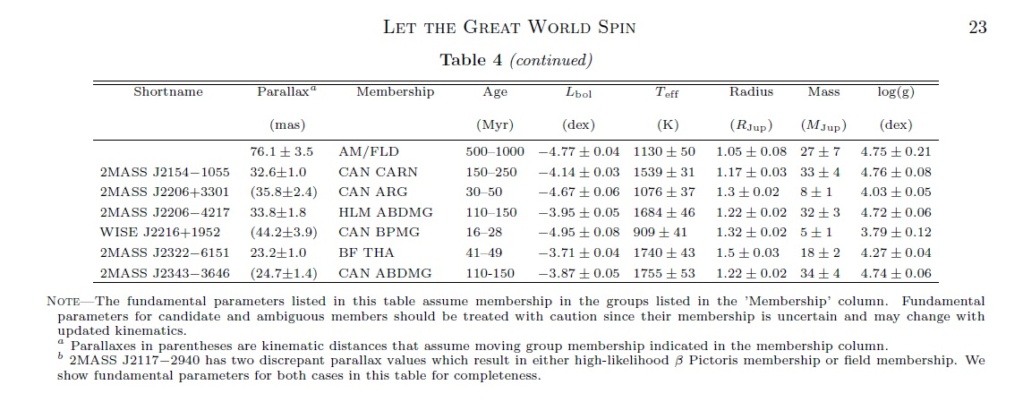Lazarus
dF star

Number of posts : 3337
Registration date : 2008-06-12
 |  Subject: Planetary-mass brown dwarfs in Taurus and Perseus Subject: Planetary-mass brown dwarfs in Taurus and Perseus  9th September 2017, 6:17 am 9th September 2017, 6:17 am | |
| Esplin & Luhman "A Survey For Planetary-mass Brown Dwarfs in the Taurus and Perseus Star-forming Regions" https://arxiv.org/abs/1709.02017Evolutionary models predict that the masses of the faintest objects are in the 4–5 Jupiter masses range. | |
|
Edasich
dK star


Number of posts : 2292
Location : Tau Ceti g - Mid Latitudes
Registration date : 2008-06-02
 |  Subject: Re: Planetary-mass brown dwarfs in Taurus and Perseus Subject: Re: Planetary-mass brown dwarfs in Taurus and Perseus  15th January 2022, 2:21 pm 15th January 2022, 2:21 pm | |
| Observations on selected brown dwarfs and a list of other low-mass substellar objects, some of which clearly within planetary domain Let the Great World Spin: Revealing the Stormy, Turbulent Nature of Young Giant Exoplanet Analogs with the Spitzer Space Telescope - Quote :
- We present a survey for photometric variability in young, low-mass brown dwarfs with the Spitzer Space Telescope. The 23 objects in our sample show robust signatures of youth and share properties with directly-imaged exoplanets. We present three new young objects: 2MASS J03492367+0635078, 2MASS J09512690 −8023553 and 2MASS J07180871−6415310. We detect variability in 13 young objects, and find that young brown dwarfs are highly likely to display variability across the L2--T4 spectral type range. In contrast, the field dwarf variability occurrence rate drops for spectral types >L9. We examine the variability amplitudes of young objects and find an enhancement in maximum amplitudes compared to field dwarfs. We speculate that the observed range of amplitudes within a spectral type may be influenced by secondary effects such as viewing inclination and/or rotation period. We combine our new rotation periods with the literature to investigate the effects of mass on angular momentum evolution. While high mass brown dwarfs (>30MJup) spin up over time, the same trend is not apparent for lower mass objects (<30MJup), likely due to the small number of measured periods for old, low-mass objects. The rotation periods of companion brown dwarfs and planetary-mass objects are consistent with those of isolated objects with similar ages and masses, suggesting similar angular momentum histories. Within the AB Doradus group, we find a high variability occurrence rate and evidence for common angular momentum evolution. The results are encouraging for future variability searches in directly-imaged exoplanets with facilities such as the James Webb Space Telescope and 30-meter telescopes.
Take a look, the mass range is between 5 and 51 M Jup  | |
|
